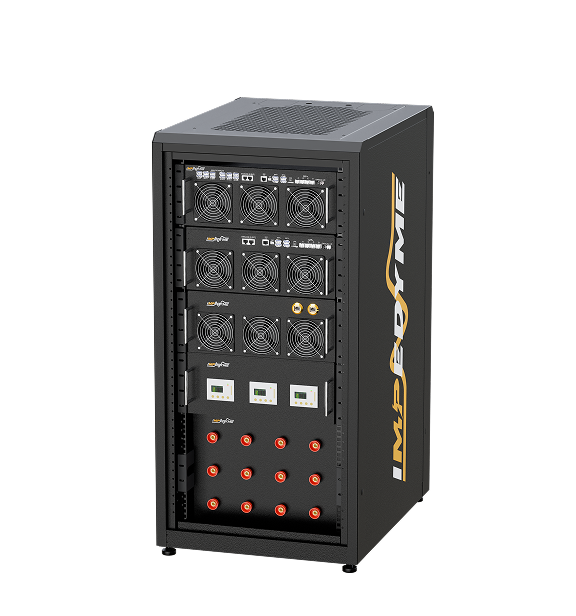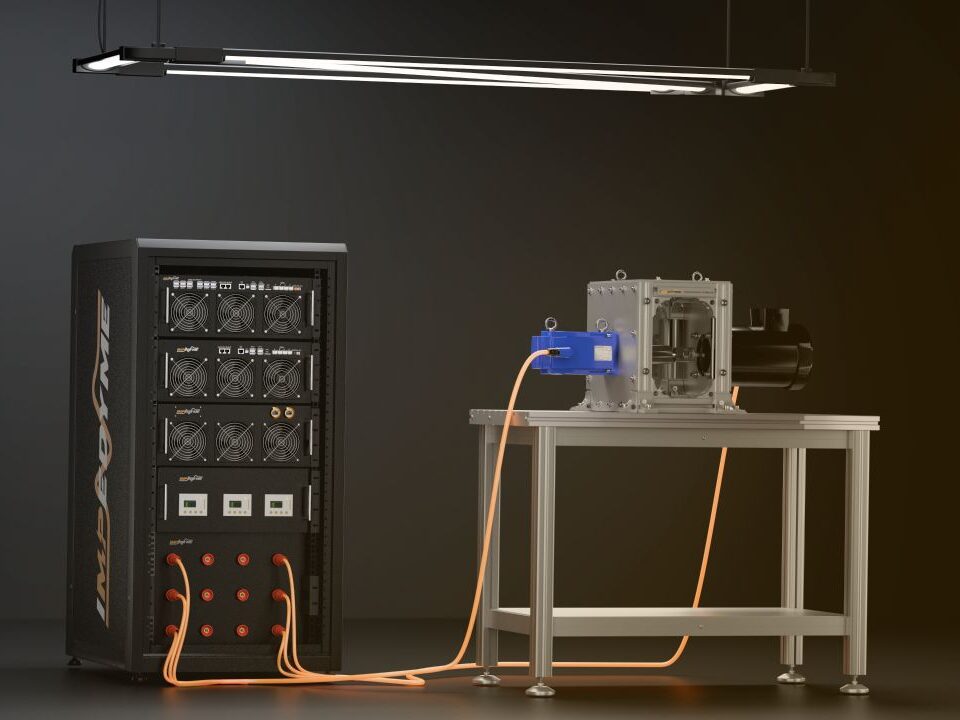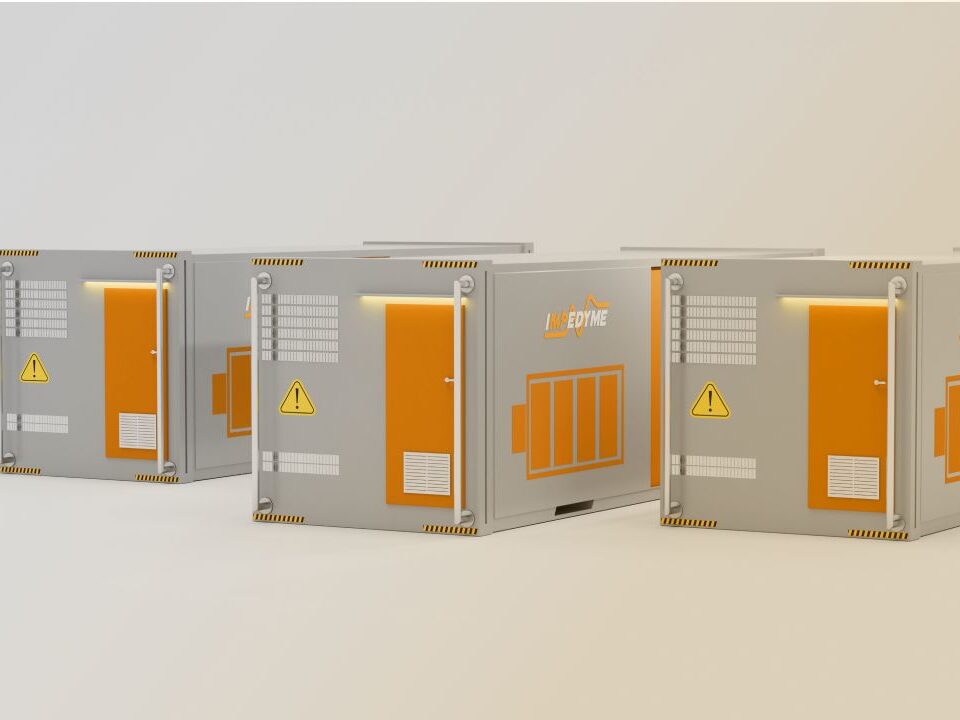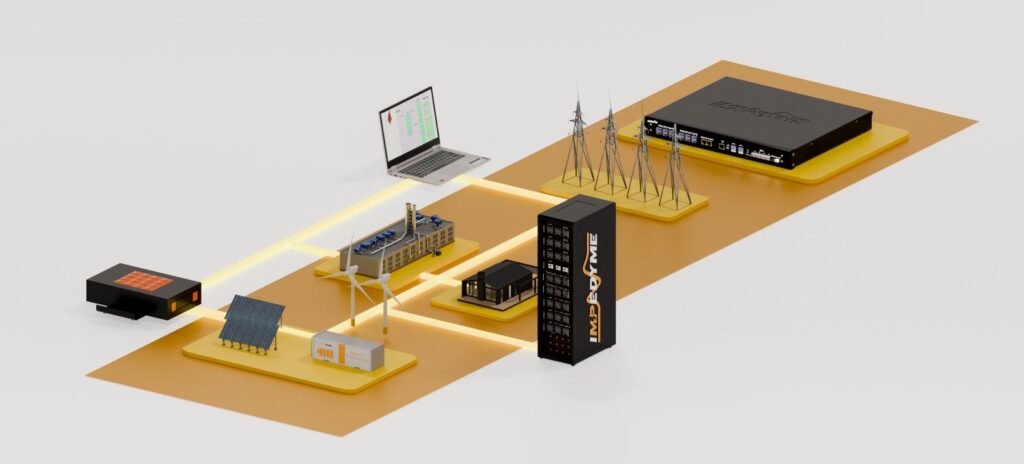
-
 Induction Motor
Induction Motor
-
 Automotive Electrical System Simulation
Automotive Electrical System Simulation
-
 DC/DC Bidirectional Converter
DC/DC Bidirectional Converter
-
 PWM Control for Brushless DC
PWM Control for Brushless DC
-
 BLDC Motor Control and Drive Simulation
BLDC Motor Control and Drive Simulation
-
 Electric Vehicle Fast Charger Simulation
Electric Vehicle Fast Charger Simulation
-
 DFIG Wind Turbine Simulation
DFIG Wind Turbine Simulation
-
 Dual Active Bridge
Dual Active Bridge
-
 EV Dynamometer Test Environment Simulation
EV Dynamometer Test Environment Simulation
-
 Electric Vehicle Simulation
Electric Vehicle Simulation
-
 Three-Phase Grid-Connected Inverter Using Direct-Q…
Three-Phase Grid-Connected Inverter Using Direct-Q…
-
 Three-Phase Grid-Connected Solar Photovoltaic
Three-Phase Grid-Connected Solar Photovoltaic
-
 Grid-Connected Rectifier
Grid-Connected Rectifier
-
 Grid-Tied Inverter System
Grid-Tied Inverter System
-
 Torque Control in a Hybrid Excitation Synchronous …
Torque Control in a Hybrid Excitation Synchronous …
-
 Wye-Delta Starting Circuit
Wye-Delta Starting Circuit
-
 IPMSM-Based Axle-Drive
IPMSM-Based Axle-Drive
-
 Simplified Parallel Hybrid Electric Vehicle
Simplified Parallel Hybrid Electric Vehicle
-
 Simplified Series Hybrid Electric Vehicle
Simplified Series Hybrid Electric Vehicle
-
 Series-Parallel Hybrid Electric Vehicle
Series-Parallel Hybrid Electric Vehicle
-
 Three-Phase Matrix Converter Simulation
Three-Phase Matrix Converter Simulation
-
 Venturini Modulation for Three-Phase Matrix Conver…
Venturini Modulation for Three-Phase Matrix Conver…
-
 Microgrid Frequency Regulation Using Vehicle-to-Gr…
Microgrid Frequency Regulation Using Vehicle-to-Gr…
-
 Three-Phase Modular Multilevel Converter
Three-Phase Modular Multilevel Converter
-
 Field-Oriented Control
Field-Oriented Control
-
 Interior Permanent Magnet Synchronous Generator
Interior Permanent Magnet Synchronous Generator
-
 Permanent Magnet Synchronous Machine
Permanent Magnet Synchronous Machine
-
 PMSM Rotor Angular Velocity
PMSM Rotor Angular Velocity
-
 PMSM-Based Electrical Traction Drive
PMSM-Based Electrical Traction Drive
-
 Maximum Power Point Tracking
Maximum Power Point Tracking
-
 Six-Phase Permanent Magnet Synchronous Machine
Six-Phase Permanent Magnet Synchronous Machine
-
 Synchronous Machine-Based Electrical Drive Simulat…
Synchronous Machine-Based Electrical Drive Simulat…
-
 Single-Stage Solar Inverter
Single-Stage Solar Inverter
-
 Three-Phase Cycloconverter Simulation
Three-Phase Cycloconverter Simulation
-
 Totem-Pole PFC Simulation
Totem-Pole PFC Simulation
-
 Twelve-Pulse Thyristor Rectifier
Twelve-Pulse Thyristor Rectifier
-
 Two-Wheeler On-Board Charger
Two-Wheeler On-Board Charger
-
 Vienna Rectifier Simulation
Vienna Rectifier Simulation
-
 High-Voltage Direct Current
High-Voltage Direct Current
-
 Wireless Power Transfer
Wireless Power Transfer

Comprehensive Documentation for Twelve-Pulse Thyristor Rectifier Control Simulation
Table of Contents
- 1 Comprehensive Documentation for Twelve-Pulse Thyristor Rectifier Control Simulation
- 1.1 Introduction
- 1.2 System Overview
- 1.2.1 What is a Twelve-Pulse Thyristor Rectifier?
- 1.2.2 Purpose of the Simulation
- 1.3 Key Features
- 1.3.1 Harmonic Reduction
- 1.3.2 Phase-Controlled Operation
- 1.3.3 Transformer-Based Phase Shifting
- 1.3.4 Simulation Objectives
- 1.4 Technical Description
- 1.4.1 System Configuration
- 1.4.2 Control Methodology
- 1.5 Advantages of Twelve-Pulse Rectifier Simulation
- 1.6 Applications
- 1.7 Simulation Benefits
- 1.8 Summary
- 1.9 Future Enhancement
- 1.10
- 1.10.1 Induction Motor
- 1.10.2 Automotive Electrical System Simulation
- 1.10.3 DC/DC Bidirectional Converter
- 1.10.4 PWM Control for Brushless DC
Introduction
The Twelve-Pulse Thyristor Rectifier Control Simulation is a detailed model designed to demonstrate high-power AC-DC conversion with reduced harmonic distortion. Twelve-pulse rectifiers are widely used in industrial applications such as HVDC systems, traction drives, and large motor drives due to their improved power quality and efficiency. This simulation provides insights into rectifier operation, phase control, and harmonic mitigation techniques essential for modern power electronics.
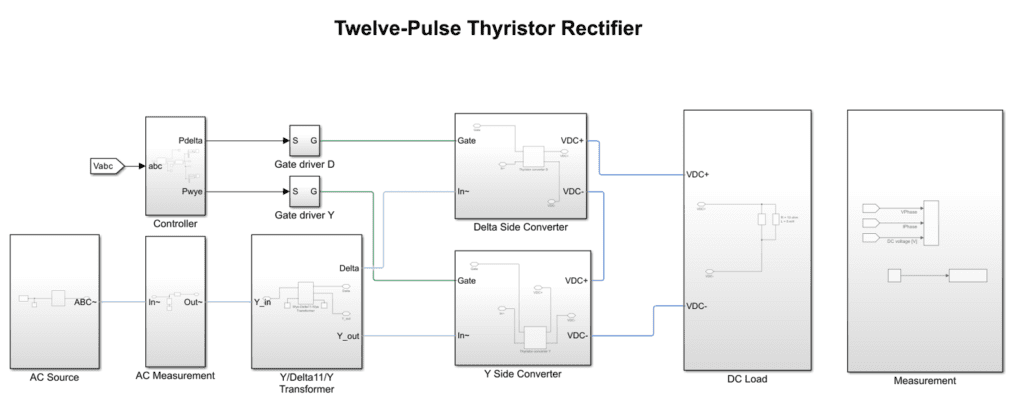
System Overview
What is a Twelve-Pulse Thyristor Rectifier?
A twelve-pulse rectifier consists of two six-pulse thyristor bridges connected through a phase-shifting transformer. This topology offers:
- Reduced Harmonic Distortion: Minimization of lower-order harmonics.
- Improved Power Factor: Better utilization of input power.
- Higher Efficiency: Suitable for high-power AC-DC conversion.
Purpose of the Simulation
The simulation aims to:
- Demonstrate the principles of twelve-pulse rectification.
- Validate phase-shifting transformer effects on harmonic reduction.
- Analyze efficiency, power factor correction, and voltage regulation.
Key Features
Harmonic Reduction
By phase-shifting the two six-pulse rectifiers by 30°, lower-order harmonics (5th, 7th, 11th, and 13th) are significantly reduced. ➡️ HIL/PHIL Benefit: Real-time analysis ensures compliance with IEEE-519 harmonic standards.
Phase-Controlled Operation
Thyristor triggering angles are adjusted to regulate DC output voltage and improve power factor. ➡️ HIL/PHIL Benefit: Dynamic testing of phase control strategies for optimized performance.
Transformer-Based Phase Shifting
A dedicated transformer introduces a 30° phase shift between the two bridges, improving harmonic cancellation. ➡️ HIL/PHIL Benefit: Simulation of various transformer configurations for performance optimization.
High Efficiency: Provides efficient power conversion with minimal losses.
- Scalability: Suitable for high-power applications in various industries.\
Precise Control: Enables accurate regulation of output voltage and current.
Simulation Objectives
This simulation helps evaluate:
- Rectifier performance under different firing angle settings.
- The effect of phase shifting on input current harmonics.
- Voltage regulation and dynamic response under load variations. ➡️ HIL/PHIL Benefit: These evaluations enable real-time testing of control strategies before hardware implementation.
Technical Description
System Configuration
- Input: Three-phase AC supply.
- Rectifier: Two six-pulse thyristor bridges.
- Transformer: Phase-shifting transformer (Δ-Y and Δ-Δ connections).
- Output: Controlled DC voltage with reduced harmonic content.
Control Methodology
- Phase Angle Control: Regulating thyristor firing angles for voltage control.
- Harmonic Mitigation: Optimizing phase shift for minimal input current distortion.
- Load Regulation: Adjusting rectifier parameters to maintain stable DC output. ➡️ HIL/PHIL Benefit: Control strategies can be validated in real-time before field deployment.
Advantages of Twelve-Pulse Rectifier Simulation
- Reduced Harmonic Distortion: Improved power quality compared to six-pulse rectifiers.
- Enhanced Efficiency: Better utilization of AC supply.
- Higher DC Output Stability: Reduced ripple and voltage fluctuations. ➡️ HIL/PHIL Benefit: Each feature can be tested across the full development cycle (RCP → HIL → PHIL) using Impedyme’s platforms.
Applications
- Electrochemical Industries: Chlor-Alkali Plants: Twelve-pulse rectifiers are used to provide high-current DC power for electrolysis processes in the production of chlorine, caustic soda, and hydrogen.
Electroplating: Precise DC current control is essential for electroplating processes, and twelve-pulse rectifiers ensure low ripple and high efficiency.
- Metal Processing: Aluminum Smelting: Twelve-pulse rectifiers are used in Hall-Héroult cells to convert AC power to high-current DC power for aluminum production.
Steel Manufacturing: In electric arc furnaces (EAFs) and rolling mills, twelve-pulse rectifiers provide stable DC power for melting and shaping metals.
- Battery Charging Systems: Electric Vehicle (EV) Charging Stations: Twelve-pulse rectifiers are used in fast-charging stations to provide high-power DC supply with low harmonic distortion.
Battery Energy Storage Systems (BESS): They are used to charge large battery banks efficiently, ensuring stable and reliable operation.
- HVDC Systems: AC-DC conversion for long-distance power transmission.
- Industrial Motor Drives: High-power DC supply for large motors.
Traction Systems: Power conversion for railway electrification. ➡️ HIL/PHIL Benefit: Real-time emulation accelerates development for specific industry applications.
Simulation Benefits
With this simulation, users can:
- Analyze twelve-pulse rectifier dynamics in detail.
- Test advanced phase control algorithms.
Assess input/output power quality. ➡️ HIL/PHIL Benefit: Insights from simulations transition seamlessly into real hardware validation.
Summary
The Twelve-Pulse Thyristor Rectifier Control Simulation provides a powerful tool for understanding and optimizing high-power AC-DC conversion. By integrating Impedyme’s HIL and PHIL solutions, the development workflow is enhanced:
| Development Stage | Impedyme’s Contribution |
|---|---|
| Control Design | RCP using HIL for rapid algorithm validation |
| Control Hardware Testing | CIL with real-time rectifier models |
| Power Stage Verification | PHIL with real voltage and power interaction |
| Final Validation | Full-system PHIL under realistic grid and load conditions |
Future Enhancement
- Implementation of advanced predictive control techniques.
- Real-time monitoring and fault-tolerant operation.
- Compliance testing with evolving harmonic standards.
- Integration with renewable energy systems for hybrid applications.
The Twelve-Pulse Thyristor Rectifier Control Simulation, combined with Impedyme’s HIL/PHIL platforms, provides a robust framework for developing and validating high-performance rectifiers. This comprehensive approach ensures faster deployment, reduced design risks, and improved efficiency for next-generation power conversion systems.
